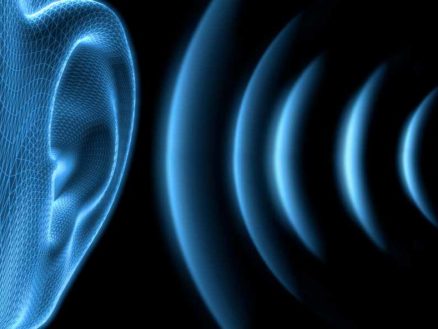Tinnitus Pulsatile
Tinnitus is a prevalent hearing disorder that affects approximately 15% to 20% of individuals, presenting as a perception of ringing or other noises in the ears.
Pulsatile tinnitus, a distinct form characterized by rhythmic pulsing or whooshing sounds, represents a rare disorder that can be identified during medical examinations. The underlying causes of pulsatile tinnitus may include vascular malformations, abnormal cerebral pressures, unique blood flow patterns near the ear, or the presence of tumors.
This condition can significantly impair a persons daily functioning. Prompt evaluation by specialists is advised to identify and potentially fix any structural factors contributing to this disorder. In cases where pulsatile tinnitus is accompanied by hearing loss or dizziness, immediate medical attention is crucial due to potential severe risks such as intracranial hemorrhage, stroke, or vision impairment.
Treatment options for pulsatile tinnitus include neurointerventional radiologist procedures, medication administration, weight management strategies, stenting techniques, and monitoring with magnetic resonance imaging (MRI), image-guided interventions alongside surgeries.
UCSF offers comprehensive treatments and expertise concerning the etiology, prevention measures as well as therapeutic approaches associated with these conditions.
Key Takeaways
- Pulsatile tinnitus can be caused by vascular malformations, abnormal cerebral pressures, unique blood flow patterns near the ear, or the presence of a tumor.
- Treatment options for pulsatile tinnitus include neurointerventional radiologist procedures, medicines, weight loss, and stenting.
- Pulsatile tinnitus should be evaluated by specialists as it can be a symptom of underlying diseases that carry significant risks such as intracranial hemorrhage, stroke, or blindness.
Causes and Risk Factors of Pulsatile Tinnitus
The causes of pulsatile tinnitus include vascular malformations, abnormal cerebral pressures, unique blood flow patterns near the ear, and the presence of a tumor.
Vascular malformations refer to abnormalities in the blood vessels that can result in turbulent blood flow, leading to tinnitus symptoms.
Abnormal cerebral pressures occur when there is an imbalance in the pressure within the brain, which can affect nearby structures such as the auditory system and cause pulsatile tinnitus.
Unique blood flow patterns near the ear can also contribute to this condition. For example, increased blood flow or changes in the pattern of blood circulation in the arteries or veins around the ear can generate sounds perceived as pulsatile tinnitus.
Additionally, the presence of a tumor near or within the auditory pathway can disrupt normal auditory function and lead to pulsatile tinnitus symptoms.
Understanding these various causes is crucial for accurate diagnosis and appropriate management of pulsatile tinnitus.
Diagnosing and Evaluating Pulsatile Tinnitus
Diagnosing and evaluating pulsatile tinnitus involves obtaining a thorough history, conducting a head and neck examination, performing a full cardiac examination, and ordering audiologic evaluations. A comprehensive history is essential to gather information about the onset, aggravating/alleviating factors, duration, and changes in symptoms of tinnitus. Differentiating between pulsatile and non-pulsatile tinnitus is important in determining the underlying cause.
The head and neck examination helps identify any abnormalities or pathologies that may be contributing to the pulsatile tinnitus. This includes palpation of the temporomandibular joint to evaluate for any TMJ-related issues. A full cardiac examination, including auscultation for carotid bruits, is necessary to assess for any vascular abnormalities that could be causing the pulsations in the ear.
Audiologic evaluations such as pure tone audiometry and tympanograms help assess hearing function and identify any associated hearing loss. These diagnostic measures are crucial in identifying the specific etiology of pulsatile tinnitus and guiding appropriate treatment options.

Differentiating Vascular and Non-Vascular Causes
Differentiating between vascular and non-vascular causes of the pulsations in the ear requires a comprehensive evaluation of the underlying pathophysiology. Vascular causes of pulsatile tinnitus involve abnormalities in blood vessels, either arterial or venous. Arterial causes may include uncontrolled hypertension and atherosclerotic carotid disease, while venous causes can be attributed to idiopathic intracranial hypertension. Non-vascular causes are less common and encompass various conditions such as metabolic diseases and myoclonus.
Treatment Options for Pulsatile Tinnitus
Treatment options for pulsatile tinnitus encompass a range of modalities, including observation, medical management, and surgical interventions. The choice of treatment depends on the underlying cause and severity of the condition.
In cases where pulsatile tinnitus is caused by a reversible or treatable condition, such as high blood pressure or an abnormality in blood vessels, lifestyle modifications and medical management may be sufficient. This can involve changes in diet, exercise, stress reduction techniques, and medications to control blood pressure or improve blood flow.
However, if the underlying cause is more complex or if conservative measures fail to alleviate symptoms, surgical intervention may be necessary. Surgical options for pulsatile tinnitus include procedures to repair or remove abnormalities in blood vessels, such as embolization or ligation of abnormal vessels. In some cases, surgery may also involve decompression of nerves or removal of tumors that are causing the symptoms.
It is important for individuals with pulsatile tinnitus to consult with a healthcare professional who specializes in ear disorders (otologist/neurotologist) or vascular conditions (vascular surgeon/neurosurgeon) to determine the most appropriate course of treatment based on their specific situation.
Managing and Coping With Pulsatile Tinnitus
Managing and coping with pulsatile tinnitus requires a multifaceted approach that focuses on addressing the impact of symptoms on daily life and implementing strategies to alleviate distress. Pulsatile tinnitus, characterized by a rhythmic pulsing or whooshing sound, can significantly affect an individual's quality of life. It is essential to develop coping mechanisms to minimize the negative consequences of this condition.
One important aspect of managing pulsatile tinnitus is identifying and addressing any underlying causes. This may involve seeking medical evaluation and treatment for conditions such as arterial or venous abnormalities, hypertension, or idiopathic intracranial hypertension. Additionally, lifestyle modifications such as reducing caffeine intake, practicing stress management techniques, and ensuring adequate sleep can help alleviate symptoms.
Furthermore, utilizing sound therapy techniques can be beneficial in managing pulsatile tinnitus. This may involve using white noise machines or hearing aids that provide background noise to distract from the pulsating sounds. Cognitive-behavioral therapy (CBT) can also be effective in helping individuals cope with the emotional distress associated with this condition.
Additionally, support groups or counseling services may offer valuable resources for individuals experiencing pulsatile tinnitus. These platforms provide opportunities for sharing experiences, learning coping strategies from others in similar situations, and receiving emotional support.
Frequently Asked Questions
Can Stress or Anxiety Worsen Pulsatile Tinnitus Symptoms?
Stress or anxiety may exacerbate symptoms of pulsatile tinnitus, although the specific mechanisms and extent of their influence are not fully understood. Further research is needed to elucidate the relationship between stress, anxiety, and pulsatile tinnitus.
Are There Any Natural Remedies or Alternative Therapies That Can Help Alleviate Pulsatile Tinnitus?
Natural remedies or alternative therapies for alleviating pulsatile tinnitus have not been extensively studied and lack strong scientific evidence. Therefore, it is recommended to consult with a healthcare professional for appropriate diagnosis and management of pulsatile tinnitus.
Can Certain Medications or Medical Conditions Contribute to the Development of Pulsatile Tinnitus?
Certain medications and medical conditions can contribute to the development of pulsatile tinnitus. Medications such as aspirin, certain antibiotics, and diuretics have been associated with this condition. Medical conditions like high blood pressure, thyroid disorders, and anemia can also be contributing factors.
Is There a Link Between Pulsatile Tinnitus and Hearing Loss?
There is a lack of research on the specific link between pulsatile tinnitus and hearing loss. Further studies are needed to determine if there is a causal relationship between these two conditions.
Are There Any Specific Lifestyle Changes That Can Help Prevent or Reduce the Severity of Pulsatile Tinnitus?
Specific lifestyle changes can help prevent or reduce the severity of pulsatile tinnitus. These include limiting exposure to loud noises, using hearing protection, managing cardiovascular health, avoiding excessive alcohol and caffeine consumption, and practicing stress management techniques.
Previous Posts






